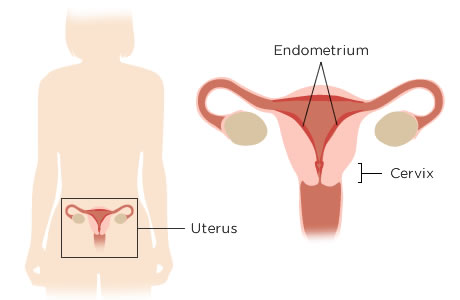Endometriosis
Endometriosis is a problem many women have during their childbearing years. It means that the tissue that lines your uterus (endometrium) is also growing outside your uterus. They usually grow on the ovaries, the fallopian tubes, the outer wall of the uterus, the guts, or other organs in the belly. In rare cases they spread to areas beyond the belly.

When you have endometriosis, the implants of tissue outside your uterus act just like the tissue lining your uterus. During your menstrual cycle, they get thicker, then break down and bleed. But the blood cannot flow out of your body. The implants can get irritated and painful. Sometimes they form scar tissue or fluid-filled sacs (cysts).
You may have the following symptoms:
- Dysmenorrhoea (painful periods)
- Chronic pelvic pain
- Pain during sex
- Abnormal bleeding – heavy periods, bleeding in between periods, bleeding after sex
- Subfertility problem
Ultrasound scan may reveal endometriotic cysts (chocolate cysts) or adenomyosis (uniform enlargement of the uterus). Blood test may show elevated CA 125 level. Sometimes a type of surgery called laparoscopy (key-hole surgery) may be needed to confirm you have endometriosis and exclude other causes of pelvic pain or subfertility.
Treatment choices depend on your symptoms and whether you want to get pregnant. These include:
- Anti-inflammatory drugs – these are analgesics to reduce bleeding and pain
- Hormone therapy (includes oral contraceptive pills or injections)
- Laparoscopy (key-hole surgery) to remove implants and scar tissue and endometriotic cysts. This may reduce pain, and it may also help you get pregnant.
- As last resort for severe pain, some women have their uterus and ovaries removed (hysterectomy and oophorectomy).



